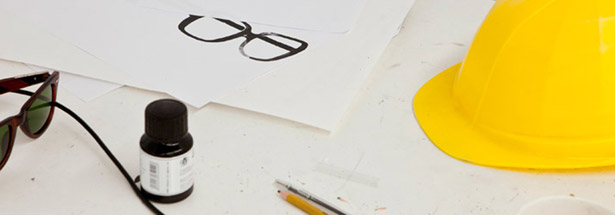27.07.2012 /
Salzburg International. Summer Academy of Fine Arts.
Panel Discussion
Organized by Hildegund Amanshauser
In it’s event programme, the Salzburg International Summer Academy of Fine Arts (16 July-25 August 2012) is devoted to the theme of the studio; artists, art historians, art theorists and curators are being invited to give lectures and to take part in discussions on the subject.
The studio is the place of artistic production, a highly charged, mystical place where art is created from diverse materials, using specific techniques. Here the artist invents him/herself. Here the production methods and their historical development become visible. All kinds of places can be studios – a particular architectural space, the classic sculpture or painting studio. Often, after the death of an artist – as for example with Constantin BrâncuÈ™i in Paris, Gustinus Ambrosi in the Augarten in Vienna or Edward Krasinski in Warsaw – his studio is preserved or reconstructed at great effort and expense, and opened to the public in order to give an insight into this magical place where the works originated.The studio can also, however, be a factory – as with Richard Serra, who contracted steel plants in the Ruhr district for the manufacture of his sculptures, or Hans Kupelwieser, who produced large-scale sculptures in the VOEST Alpine foundry in Linz. A computer memory, an office, the street, the town, the exhibition, a café – all these and more can serve as an artist’s studio.Since the 1960s, the classic concept of the atelier has been increasingly called in question. In 1971, Daniel Buren proclaimed the abolition of the studio, and John Baldessari’s Post Studio class in CalArts started at around the same time. Site-specificity, art in public space, installation, appropriation, performance, interventions and the like are all developments of the past forty years, signifying a redefinition of artistic work, and consequently of the function of the atelier as a workshop for physical production, at least in its 19th-century form.
1. History of the studio/post-studio
The first section is devoted to the history of the studio from the 17th century to the present day, from Rembrandt’s studio, through Daniel Buren’s abolition of the studio, to the art factory where works are produced for artists worldwide.
Svetlana Alpers, Woutter Davids, Katharina Grosse
2. The city is our studio
Since the 1990s there has been a striking decrease of public space in towns and cities. This is due to increasing privatisation, supervision and commercialisation. Here, then, we have to ask: who does urban public space belong to? What initiatives are taken by artists, what are the tasks of activists, is there a right to civil movement, what new production sites are towns and cities making available to artists…?
Christoph Schäfer, Tanja Boukal, Shaina Anand, Ashok Sukumaran, Niels Boeing
3. Co-operatives, collaborations, political interventions
The question of site, function and structure of the studios entails the question of artistic production. What persons, in what functions or roles, are involved in the creation of a work? What form does the work take?
Work in collectives, interdisciplinary work, dissolution of roles, participation, artistic work as collective knowledge production…
WHW, Tania Bruguera, Kerstin Brätsch, Jörg Franzbecker
4. The global/local studio
This section will examine the condition and the significance of places where art is produced, and the historical development of these places over recent decades. Regional differences will be discussed, as will changes due to globalisation.
Bisi Silva, CCA Lagos, Bojana Pejic, Oafur Eliasson, Jens Hoffmann
5. Diverse spaces
Since the Modern movement, artists have increasingly taken over new spaces for the creation of art – media, landscape, museums, public space. These become the artists’ atelier/post-atelier; works are conceived as site-specific, their content relating directly to their location.
Christian Jankowski, Andrea Fraser, Miwon Kwon, Philip Ursprung
